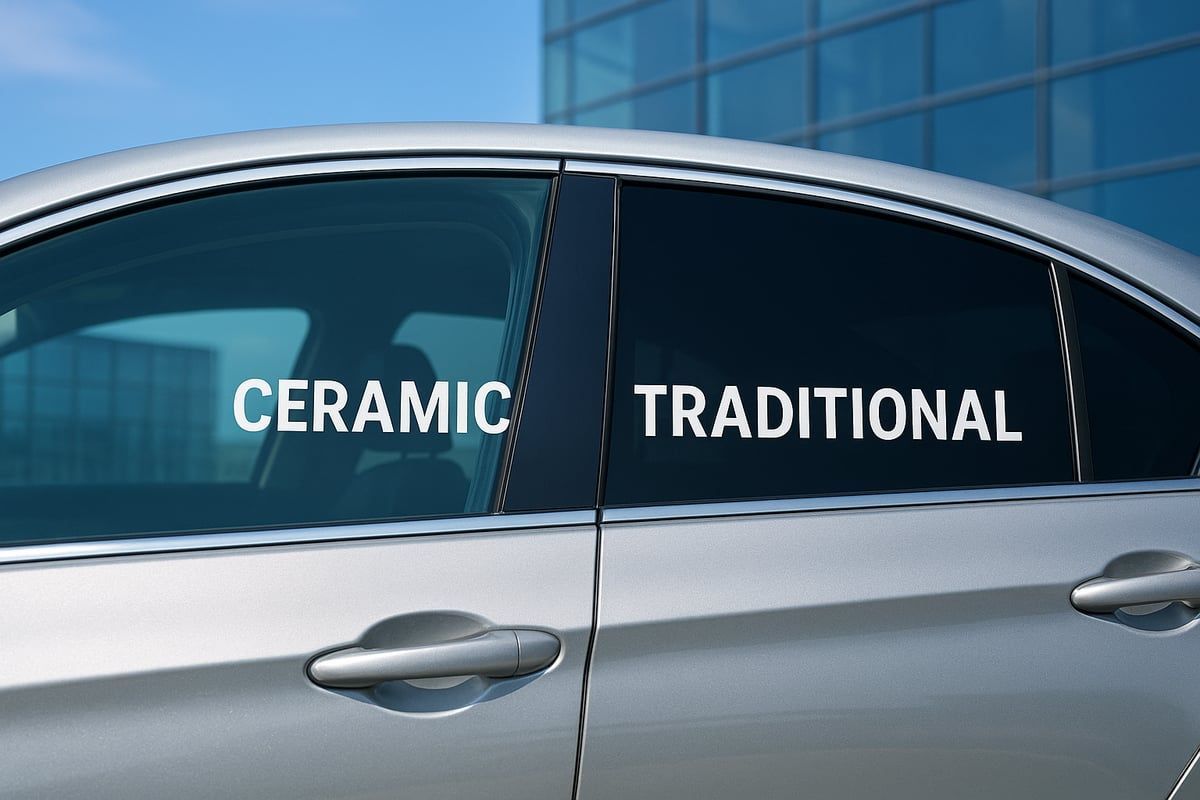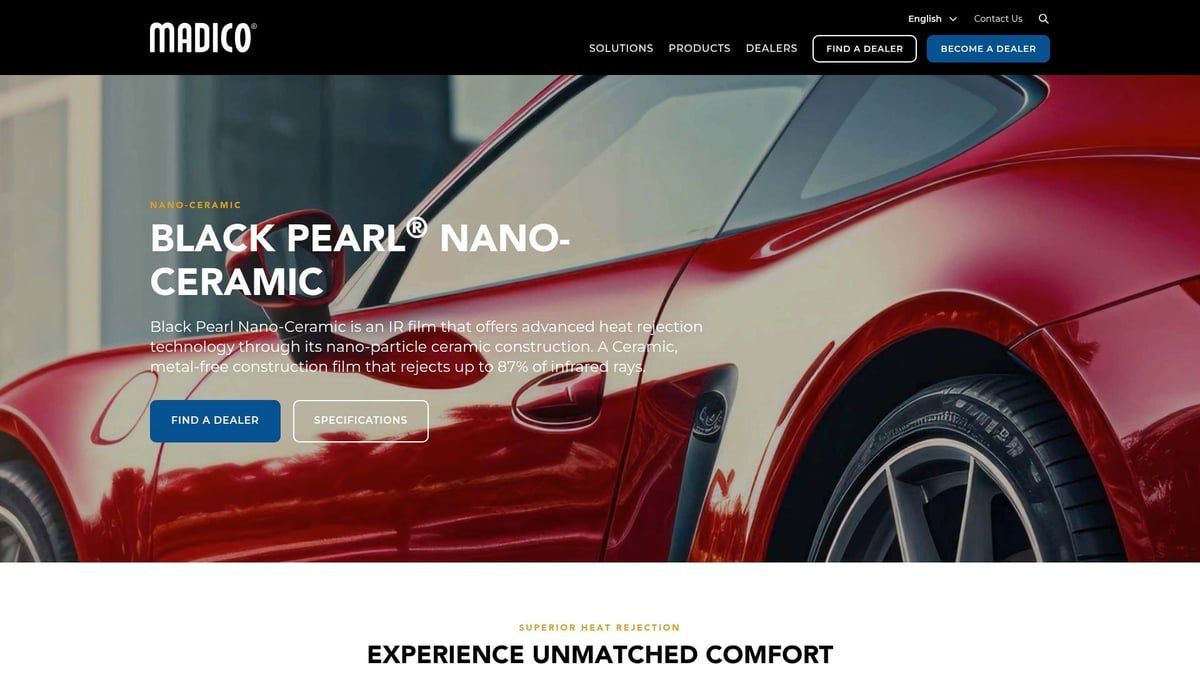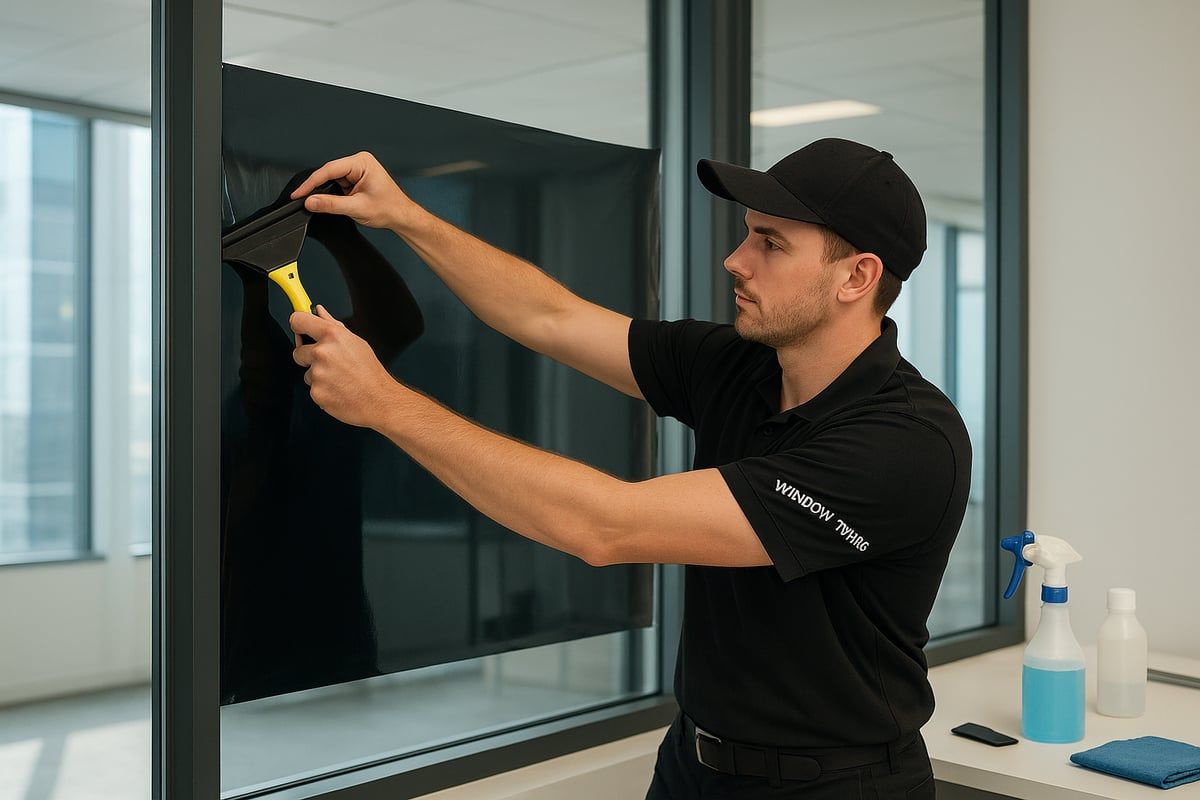70 Percent Tint Guide: Benefits, Laws, and Clarity in 2025
70 Percent Tint Guide: Benefits, Laws, and Clarity in 2025
Curious if 70 percent tint is right for your vehicle or property in 2025? You are not alone, as more drivers and homeowners are exploring this option for its unique blend of clarity and protection.
Interest is growing because 70 percent tint offers a balance between excellent visibility and effective shielding from UV rays. With new laws and safety standards emerging, understanding your choices is more important than ever.
This guide demystifies 70 percent tint, helping you weigh its advantages, legal status, and visibility. Ready to make a smart decision? Discover what 70 percent tint means, its benefits, legal updates, clarity and safety factors, and expert installation tips.
What is 70 Percent Tint? Understanding the Basics
Choosing the right window film starts with understanding what 70 percent tint really means. This term refers to a film that allows 70 percent of visible light to pass through, a figure known as Visible Light Transmission (VLT). In practical terms, the higher the VLT percentage, the lighter and clearer the tint appears.
How Tint Percentages Work
Window tint percentages often cause confusion. A 70 percent tint is much lighter than a 20 or 35 percent tint. Here is a quick comparison:
Tint Level (VLT)AppearanceLight Allowed InTypical Use70%Nearly clear70%Windshields, homes, offices35%Moderately tinted35%Side/rear car windows20%Dark tint20%Privacy, rear windows
A higher VLT like 70 percent tint means more daylight enters the space, keeping visibility high. Lower percentages block more light and appear darker, but may not be legal on certain windows.
Typical Uses and Visual Appearance
The 70 percent tint is commonly used on vehicle windshields, residential windows, and commercial glass. For cars, many states require at least 70 percent VLT on the windshield to ensure clear vision for drivers. Tesla and other modern vehicles often use 70 percent tint for their windshields, balancing legal compliance with effective UV protection.
In homes and offices, 70 percent tint provides a subtle, barely-there look. It is ideal for areas where natural light is important but some sun protection is needed. The appearance is almost transparent, making it a popular choice for sunrooms, storefronts, and conference rooms.
Industry Standards and Materials
Across the United States, 70 percent tint is often the legal minimum for front windshields. This standard is set to maximize safety and visibility while still offering protection from harmful rays. Always check your local regulations before installation.
When selecting a 70 percent tint, you will find several material options:
- Ceramic films: Superior heat and UV rejection, minimal signal interference.
- Dyed films: Economical, provide basic glare reduction.
- Metallic films: Reflective, strong heat rejection, but may affect electronics.
For a deeper look at the benefits of ceramic films, see this Ceramic window tint advantages guide.
Who Should Consider 70 Percent Tint?
Drivers seeking legal windshield protection, homeowners wanting to preserve views, and business owners looking for energy savings all benefit from 70 percent tint. Its clarity makes it suitable for anyone who values natural light but still wants to reduce UV exposure and heat.
In summary, 70 percent tint offers a unique blend of clarity, compliance, and protection. Whether for vehicles, homes, or offices, understanding its basics is the first step toward making a smart decision in 2025.
Benefits of 70 Percent Tint: Clarity, Comfort, and Protection
Choosing 70 percent tint in 2025 means getting a smart balance of visual clarity, comfort, and strong protection for your vehicle or property. This light yet effective tint offers far more than meets the eye, making it a popular choice for modern drivers and homeowners seeking both compliance and real-world benefits.
Maximum UV and Heat Protection
Despite its light appearance, 70 percent tint can block up to 99 percent of harmful UV rays, protecting your skin as well as your car’s interior. This high level of UV filtration is achieved through advanced film technologies, including ceramic and spectrally selective layers. These films also reflect a significant portion of solar heat, helping to keep your cabin or living space cooler even on the hottest days.
By reducing solar heat gain, 70 percent tint lessens the burden on your air conditioning system. This means greater comfort, especially during summer, and can lead to lower energy consumption over time. For a deeper dive into how sun control films achieve these results, you can explore this Solar guard tinting overview.
Clarity and Glare Control
One standout feature of 70 percent tint is its ability to minimize glare from sunlight and headlights without noticeably darkening your windows. This improves visibility for drivers, especially during dawn, dusk, or nighttime driving. Unlike darker films, 70 percent tint preserves optical clarity, which is crucial for safety and passing inspections in most states.
This clarity is also appreciated in homes and offices, where natural light is desired without harsh reflections or eye strain. By reducing glare, the tint creates a more comfortable environment for work, relaxation, or driving.
Interior Protection and Energy Efficiency
70 percent tint acts as an invisible shield for your vehicle’s or property’s interior. By blocking UV rays, it helps prevent fading, cracking, and deterioration of upholstery, dashboards, and flooring. This protection extends the lifespan of your investments and maintains a fresh, new appearance.
In addition, the reduction of solar heat means less reliance on cooling systems. For homeowners and business owners, this can translate to lower energy bills and a smaller environmental footprint. The combination of UV filtering and heat rejection makes 70 percent tint a practical solution for those seeking both comfort and savings.
Safety and Shatter Resistance
Safety is another critical benefit of 70 percent tint. Modern films are engineered to hold glass fragments together in the event of an accident or break-in, reducing the risk of injury from shattered glass. This added layer of security is especially important for vehicles and ground-level windows in homes or commercial spaces.
Real-World Example: Tesla Model 3
A prime illustration of these benefits can be seen in the Tesla Model 3. Many owners opt for 70 percent tint on their windshields to comply with regulations while still enjoying a cooler cabin, less glare, and strong UV protection. The result is a comfortable driving experience with no compromise on visibility or style.
Summary Table: Key Benefits of 70 Percent Tint
BenefitDescriptionUV ProtectionBlocks up to 99% of harmful raysHeat ReductionKeeps interiors cooler, lowers AC usageGlare ControlReduces eye strain, improves safetyOptical ClarityMaintains clear view day and nightInterior ProtectionPrevents fading and crackingEnergy EfficiencyLowers energy bills in homes and businessesSafetyAdds shatter resistance to glass
In short, 70 percent tint delivers a well-rounded package of clarity, comfort, and protection, making it an ideal choice for anyone wanting to enhance their vehicle or property in 2025.
70 Percent Tint Laws in 2025: What’s Legal and What’s Not
Understanding 70 percent tint laws in 2025 is crucial for anyone considering window tinting for a vehicle, home, or business. Regulations around visible light transmission (VLT) continue to evolve, and 70 percent tint has become a focal point due to its balance of clarity and protection. Across the United States, lawmakers are adapting standards to address both safety and consumer preferences. Staying informed about these changes helps ensure your tint choice remains compliant.
U.S. Tint Laws in 2025: What’s Changed?
In 2025, 70 percent tint is increasingly recognized as a standard for windshields and front windows in many states. Legislative updates reflect growing awareness of both safety and health benefits, particularly UV protection. Most states now specify exact VLT percentages for different windows, with 70 percent tint frequently set as the minimum allowed for windshields. These changes are often driven by advances in tint technology, making lighter films more effective without compromising visibility.
State-by-State Differences for 70 Percent Tint
Each state in the U.S. sets its own window tint laws, which means the legality of 70 percent tint can vary widely. For example, both Illinois and California require at least 70 percent VLT on front windshields, aligning with safety priorities. Other states may allow darker tints or have additional restrictions for side and rear windows. To help drivers and property owners navigate these variations, detailed resources like the 2025 Window Tint Laws by State provide a comprehensive breakdown for every state.
StateWindshield VLTFront Side VLTRear Side VLTCalifornia70%70%AnyIllinois70%35%35%Texas25%25%AnyFlorida28%28%15%
Always verify local requirements before installing 70 percent tint, as regulations may change.
Federal Regulations and Updates
While most tint laws are set at the state level, federal guidelines influence standards for vehicle safety and manufacturing. In 2025, no new federal mandates specifically target 70 percent tint, but the National Highway Traffic Safety Administration (NHTSA) continues to emphasize the importance of clear visibility. Manufacturers often use 70 percent tint on windshields to ensure compliance with both federal safety standards and most state laws.
Penalties for Non-Compliance
Failing to comply with 70 percent tint regulations can result in costly penalties. Typical consequences include fines, failed vehicle inspections, or even orders to remove non-compliant tint. Some states have stepped up enforcement in 2025, using VLT meters during roadside checks. Repeat offenses may lead to increased penalties or impact vehicle registration status. Staying within legal limits for 70 percent tint is the best way to avoid these issues.
Medical Exemptions and Special Cases
Certain individuals may qualify for medical exemptions that allow the use of 70 percent tint or even darker films. Common conditions include photosensitivity or skin disorders that require additional UV protection. To obtain an exemption, drivers typically need documentation from a healthcare provider and must submit it to their state’s motor vehicle department. The process and allowable VLT percentages can differ, so always check your state’s specific requirements before applying 70 percent tint under a medical exemption.
International Perspective
70 percent tint laws are not exclusive to the United States. In Canada, similar standards apply, especially for front windshields and driver windows. The UK generally prohibits any tint that reduces VLT below 70 percent on front glass, reflecting a shared emphasis on safety. Australia’s regulations vary by territory, but many regions also set 70 percent as the minimum for windshields. These international trends underscore the global movement toward lighter, safer tints without sacrificing protection.
Staying informed about 70 percent tint laws in 2025 is essential for legal compliance, safety, and peace of mind. Whether you’re a driver in California, a homeowner in Texas, or a commercial property manager in Ontario, understanding these regulations ensures you make smart, compliant tint choices.
Clarity and Visibility: Safety Impacts of 70 Percent Tint
Maintaining clear visibility is essential for safe driving, which is why so many drivers and property owners are considering 70 percent tint. This level of window tint is designed to maximize optical clarity while still providing essential protection against UV rays and heat. By allowing 70 percent of visible light to pass through, this tint ensures that drivers can see the road, pedestrians, and traffic signs without obstruction, day or night.
The Role of Clarity in Safe Driving
When evaluating 70 percent tint, one of the main advantages is its impact on both daytime and nighttime visibility. Unlike darker films, this level of tint does not significantly reduce the driver’s ability to see through the glass. Studies and competitor insights show that 70 percent tint does not statistically increase accident rates, as it lets in ample natural light while reducing glare from the sun and headlights.
Day and Night Visibility with 70 Percent Tint
With 70 percent tint, drivers benefit from reduced glare during sunny days and improved comfort on long commutes. At night, the high visible light transmission ensures that hazards, road markings, and other vehicles remain easily visible. Quality films are engineered to prevent optical distortion, so the view through the windshield remains crisp and true. In fact, most modern vehicles with 70 percent tint pass state safety inspections without issue.
Inspections, Law Enforcement, and Film Quality
Clarity is a top priority for law enforcement and vehicle inspectors. In many states, regulations require at least 70 percent VLT for windshields to balance safety with protection. Using premium tint films at this level means you do not have to worry about visual distortion or compliance problems. For a detailed overview of legal tint percentages and inspection requirements in your area, consult the Window Tint Laws by State (2025) guide.
Recommendations and Myths: 70 Percent Tint in Practice
If you have vision concerns or drive frequently at night, 70 percent tint is often recommended by both eye care professionals and industry experts. Myths that this tint level impairs nighttime driving have been disproven by recent data. In reality, 70 percent tint allows for excellent clarity, with no significant reduction in reaction time or visual acuity. Always choose professional installation to guarantee that your tint meets both safety and legal standards.
Step-by-Step Guide: Choosing and Installing 70 Percent Tint
Choosing and installing 70 percent tint is a process that rewards careful planning. By following a systematic approach, you can maximize benefits like UV protection, comfort, and compliance while avoiding costly mistakes.
Step 1: Assess Your Needs
Start by identifying your primary goals for 70 percent tint. Are you seeking enhanced comfort, UV protection, or legal compliance? Consider if you want to reduce glare, protect interior surfaces, or simply add a subtle look to your car or property.
Think about where the tint will be applied. Vehicles, homes, and commercial buildings each have unique requirements. For example, windshields often require a lighter tint to maintain visibility and satisfy legal standards.
Step 2: Research Local Laws and Restrictions
Before selecting 70 percent tint, check your local window tint laws. Regulations vary by state and even by municipality. Some states require at least 70 percent VLT on windshields, while others have stricter or more relaxed rules for side and rear windows.
To avoid fines or inspection issues, consult official resources or professional installers who are familiar with current regulations. A VLT meter can also help verify compliance after installation.
Step 3: Compare Film Types
Not all 70 percent tint films are created equal. The main types include ceramic, dyed, and metallic films. Each offers different benefits at the 70 percent VLT level.
Film TypeUV ProtectionHeat RejectionClarityCostCeramicExcellentHighHighHigherDyedGoodModerateGoodAffordableMetallicVery GoodHighGoodModerate
Ceramic films are popular for their clarity and superior heat rejection, while dyed films are budget-friendly but may not last as long.
Step 4: Select a Reputable Installer
Choosing the right installer is crucial for a lasting and compliant result. Look for certified professionals with positive reviews and experience with 70 percent tint. Ask about warranties, the brands they use, and whether they offer post-installation support.
A professional installer ensures the tint meets legal requirements and is applied without bubbles or streaks. For expert guidance on installer selection and best practices, consult Professional window tinting tips.
Step 5: Prepare Your Windows
Proper preparation makes a significant difference. Clean the glass thoroughly to remove dust, grease, and residues. Use lint-free cloths and approved cleaners. For vehicles, make sure windows are rolled up and dry before starting the tinting process.
Step 6: Professional vs. DIY Installation
Deciding between professional and DIY installation depends on your skill level, budget, and desired outcome. Professional installation offers peace of mind, better warranties, and compliance assurance. DIY kits can save money but may result in imperfections if not done carefully.
Tesla owners, for example, often choose professional installation for their 70 percent tint to protect their investment and maintain warranty coverage.
Step 7: Post-Installation Care and Maintenance
After installing 70 percent tint, avoid rolling down windows or cleaning for several days to allow curing. Use gentle cleaners and soft cloths to prevent scratches. Regular care extends the life of the tint, which typically lasts 5-10 years when installed by professionals.
Inspect the tint periodically for bubbling or peeling. Early attention to issues ensures long-lasting, effective performance.
Practical Tips and Common Mistakes
- Always confirm the product's VLT rating before purchase.
- Check for manufacturer and installer warranties.
- Avoid cleaning with harsh chemicals or abrasive tools.
- Watch for small air bubbles during installation—they can indicate poor adhesion.
By following these steps, you can enjoy the full benefits of 70 percent tint without legal headaches or premature wear.
70 Percent Tint in 2025: Trends and Innovations
The world of 70 percent tint is changing rapidly in 2025. Driven by advances in technology and evolving regulations, this lighter shade is now at the forefront of innovation for vehicles, homes, and businesses. Let's explore what's new, what's next, and how these trends can help you make a smarter tint decision.
New Film Technologies
In 2025, 70 percent tint benefits from a wave of advanced materials. Nano-ceramic films are leading the way, offering high heat rejection while remaining nearly clear. Multi-layer and spectrally selective films are also gaining traction, delivering improved UV and infrared blocking without darkening the view.
These innovations mean you no longer have to sacrifice optical clarity for protection. Even at 70 percent tint, you can expect up to 99 percent UV filtering and significant heat reduction. For those wanting a barely-there look with real performance, these films are setting new industry benchmarks.
Table: Comparison of Modern 70 Percent Tint Technologies
TechnologyUV BlockHeat RejectionClarityDurabilityNano-ceramicUp to 99%HighExcellent10+ yearsSpectrally selective98%+ModerateSuperior7–10 yearsDyed/Metallic95%ModerateGood5–7 years
Smart Tint Solutions
The rise of smart tint solutions is another major trend for 70 percent tint. Switchable films, controlled by smartphone apps or home automation systems, let users adjust window opacity on demand. This flexibility is ideal for spaces that need occasional privacy but want maximum daylight most of the time.
In vehicles, 70 percent tint is now being integrated into smart glass systems. Drivers can toggle between regular and shaded modes for comfort and safety. As these technologies become more affordable, expect to see more homes and cars using smart tint to customize their environment.
Sustainability and Market Trends
Sustainability is a top priority for manufacturers in 2025. Many 70 percent tint products now use eco-friendly materials and recyclable components. Production processes are being refined to reduce energy consumption and waste, making window films a greener choice for environmentally conscious consumers.
Market demand for 70 percent tint has grown, as insurance incentives and updated regulations favor lighter, compliant films. According to industry reports, the market share for 70 percent tint is expected to increase significantly by the end of the year. For a detailed look at how current laws are shaping these trends, you can visit the 2025 Window Tinting Laws by State guide.
Automotive Trends and Future Predictions
Automakers are increasingly offering factory-installed 70 percent tint on windshields and panoramic roofs. These OEM solutions ensure compliance with strict safety standards while delivering comfort and UV protection. Recent advancements in film technology enable nearly invisible tints to outperform older, darker films in heat rejection.
Looking ahead, experts predict that 70 percent tint will remain popular as laws continue to favor lighter shades for visibility and safety. Innovative features, such as self-healing coatings and integrated solar energy capture, may soon become standard. As consumer preferences shift toward smarter, safer, and greener solutions, 70 percent tint is poised to set the standard for years to come.
Frequently Asked Questions About 70 Percent Tint
Choosing 70 percent tint raises many practical questions. Below, we answer the most common concerns to help you decide if this tint level fits your needs in 2025.
Can you see clearly through 70 percent tint at night?
Yes, 70 percent tint offers excellent clarity both day and night. Because this film allows 70 percent of visible light to pass through, you experience minimal reduction in visibility after dark. For most drivers, 70 percent tint feels almost like factory glass, delivering protection without noticeable dimming. If you drive frequently at night or have vision concerns, this is a safe choice.
Will 70 percent tint pass inspection in my state?
In many states, 70 percent tint is the legal minimum allowed for windshields and front windows. However, laws can vary, and some states have stricter or more lenient regulations. Before installation, always check your local requirements. For a detailed breakdown, see the Window Tint Laws For Each State: 2025 Ultimate Guide, which provides up-to-date VLT limits by state.
How much heat and UV does 70 percent tint block?
Despite its lighter appearance, 70 percent tint can block up to 99 percent of harmful UV rays, depending on the film technology. It also reduces heat, helping keep interiors cooler and protecting your skin and upholstery. The actual heat rejection varies by product, but most high-quality films at this level offer significant comfort and protection benefits.
Is 70 percent tint worth it for privacy?
While 70 percent tint is nearly clear, it still offers a subtle privacy benefit by reducing glare and making it slightly harder to see inside. For those seeking maximum privacy, a lower VLT may be preferable. However, for windshields and front windows, 70 percent tint strikes a balance between visibility and a modest privacy upgrade.
Can 70 percent tint be applied over factory-tinted glass?
Yes, you can apply 70 percent tint over factory-tinted windows. This is common for vehicles with pre-tinted rear windows, allowing you to match the appearance or add UV and heat protection without making the glass too dark. Always verify that the combined VLT remains legal for your area.
How long does 70 percent tint last?
With professional installation and proper care, 70 percent tint can last 5 to 10 years or more. Premium films, like nano-ceramic options, tend to offer the best durability and resistance to fading or bubbling. Regular cleaning and avoiding harsh chemicals will help extend the lifespan of your tint.
Does 70 percent tint affect cell phone or GPS signal?
Most modern 70 percent tint films, especially non-metallic types like ceramic, do not interfere with cell phone, GPS, or radio signals. Metallic films may cause minor disruptions, but this is rare at the 70 percent level. If connectivity is a priority, ask your installer for a non-metallic film recommendation.
Real customer example: Many Tesla owners choose 70 percent tint for their windshields to maximize UV protection and comfort without sacrificing clarity. Others report passing inspections easily and enjoying a cooler, safer cabin.
After exploring the benefits, clarity, and legal considerations of 70 percent tint in 2025, you now have the insights you need to make a confident and informed choice for your vehicle or property. Whether you want to enhance comfort, boost security, or ensure compliance with the latest laws, the right window solution can make all the difference. If you are ready to protect what matters most with expert installation and advanced film technology, take the next step and Get Protected Today.










